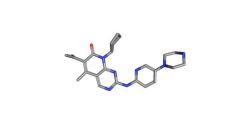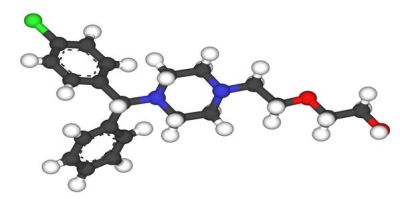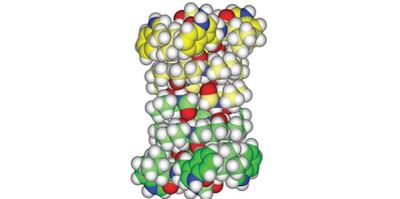Merck & Co. plans to seek US marketing approval next year for its long-delayed experimental osteoporosis drug odanacatib, Reuters reported. Although the drug proved effective in a late-stage trial, its use was associated with rare thigh-bone fractures seen with standard treatments.
Osteoporosis is a bone-thinning disease primarily affecting postmenopausal women. Odanacatib works by blocking cathepsin K, an enzyme involved in the body's natural process of resorbing bone, its manufacturer said.
About 17,000 women aged 65 years or older were included in the trial known as LOFT. Merck said odanacatib, a once-weekly pill, noticeably reduced the risk of fractures of the hip and spine, and of non-vertebral fractures, compared with placebo.
Key findings of the LOFT study include:
The same kind of rare femur fractures are regarded as among the most worrisome side effects of the leading class of treatments, called bisphosphonates, which include Merck's own Fosamax and generic forms of it manufactured by other companies.
The study patients who developed the thigh fractures had experienced some form of trauma and had severe osteoporosis, according to Keith Kaufman, a senior Merck research official. In contrast, many such fractures associated with bisphosphonates have been "spontaneous," noted Kaufman.
In addition, certain skin lesions occurred more often in patients taking odanacatib compared to those in the placebo group. The condition, however, went away or moderated after treatment was discontinued, the Merck official said.
Industry analysts have said the safety profile of odanacatib "has some red flags" which may cause concern among regulators. Still, odanacatib's benefits seem to outweigh its risks, BMO Capital Markets analyst Alex Arfaei said in a research note. Arfaei expects that the drug will be approved by early 2016 and achieve sales of $536 million in 2020.
Merck initially planned to obtain marketing approval in the first half of 2013. However, early last year, the company announced it would delay its filing until 2014 due to some "safety issues" that needed to be resolved in an ongoing extension of the LOFT trial.
Now the company's marketing application has been postponed until 2015 "to collect additional long-term data" on the relative benefit and risk of odanacatib, Kaufman said.
In a late-stage trial whose findings were described in 2012, odanacatib showed effectiveness in preventing fractures, boosting Wall Street's hopes that the new osteoporosis drug would be approved and eventually generate sales of up to $2 billion annually.
Source: Reuters.com
Image Credit: Wikipedia
Osteoporosis is a bone-thinning disease primarily affecting postmenopausal women. Odanacatib works by blocking cathepsin K, an enzyme involved in the body's natural process of resorbing bone, its manufacturer said.
About 17,000 women aged 65 years or older were included in the trial known as LOFT. Merck said odanacatib, a once-weekly pill, noticeably reduced the risk of fractures of the hip and spine, and of non-vertebral fractures, compared with placebo.
Key findings of the LOFT study include:
- Overall, the rate of side effects was similar in the two patient groups, although those taking odanacatib had a slightly higher incidence of death and atrial fibrillation, a form of irregular heartbeat that can cause stroke.
- Similar numbers of cardiovascular events in both patient groups were observed; a numerically higher incidence of strokes in the odanacatib group was not deemed statistically significant.
- Five patients taking odanacatib developed atypical fractures of the thigh-bone, compared with none in the placebo group.
The same kind of rare femur fractures are regarded as among the most worrisome side effects of the leading class of treatments, called bisphosphonates, which include Merck's own Fosamax and generic forms of it manufactured by other companies.
The study patients who developed the thigh fractures had experienced some form of trauma and had severe osteoporosis, according to Keith Kaufman, a senior Merck research official. In contrast, many such fractures associated with bisphosphonates have been "spontaneous," noted Kaufman.
In addition, certain skin lesions occurred more often in patients taking odanacatib compared to those in the placebo group. The condition, however, went away or moderated after treatment was discontinued, the Merck official said.
Industry analysts have said the safety profile of odanacatib "has some red flags" which may cause concern among regulators. Still, odanacatib's benefits seem to outweigh its risks, BMO Capital Markets analyst Alex Arfaei said in a research note. Arfaei expects that the drug will be approved by early 2016 and achieve sales of $536 million in 2020.
Merck initially planned to obtain marketing approval in the first half of 2013. However, early last year, the company announced it would delay its filing until 2014 due to some "safety issues" that needed to be resolved in an ongoing extension of the LOFT trial.
Now the company's marketing application has been postponed until 2015 "to collect additional long-term data" on the relative benefit and risk of odanacatib, Kaufman said.
In a late-stage trial whose findings were described in 2012, odanacatib showed effectiveness in preventing fractures, boosting Wall Street's hopes that the new osteoporosis drug would be approved and eventually generate sales of up to $2 billion annually.
Source: Reuters.com
Image Credit: Wikipedia
Latest Articles
Stroke, Osteoporosis, atrial fibrillation, bone fracture, bisphosphonates
Merck & Co. plans to seek US marketing approval next year for its long-delayed experimental osteoporosis drug odanacatib, Reuters reported. Although th...


























